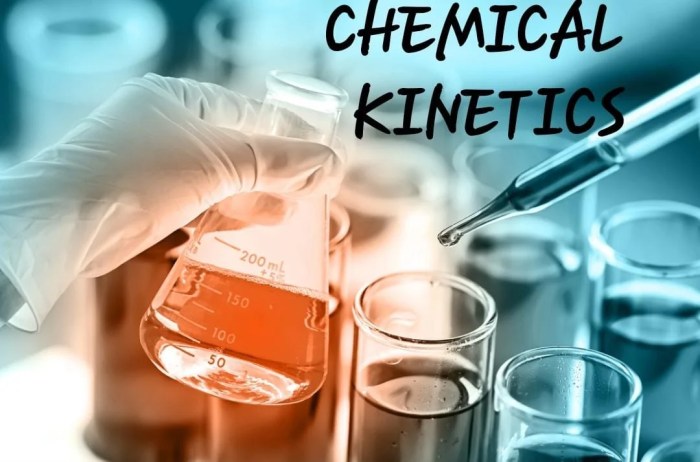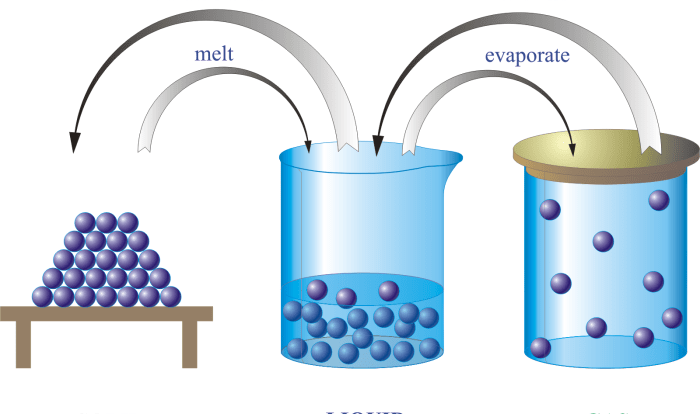Chemical kinetics pre lab answers – Chemical kinetics pre-lab answers provide the foundation for a successful and informative laboratory experience. By delving into the intricacies of chemical reactions and their rates, students gain invaluable insights into the dynamic world of chemistry.
This comprehensive guide will equip you with the knowledge and understanding necessary to excel in your pre-lab preparation, experimental design, data collection and analysis, and interpretation of results. With a focus on accuracy, precision, and error analysis, you will be well-prepared to conduct meaningful chemical kinetics experiments and draw sound conclusions.
Pre-Laboratory Preparation

Pre-laboratory preparation is an essential step in conducting chemical kinetics experiments. It ensures that students are familiar with the experiment’s purpose, procedures, and potential hazards, leading to a more efficient and successful laboratory session.
Before the laboratory session, students should thoroughly review relevant literature and experimental procedures. This will help them understand the theoretical background of the experiment, the techniques involved, and the safety precautions that need to be taken. Students should also take time to plan their experiments carefully, including selecting appropriate experimental conditions and variables.
Effective pre-laboratory preparation allows students to optimize their time in the laboratory, minimize errors, and maximize their learning outcomes.
Tips for Effectively Preparing for a Chemical Kinetics Pre-Lab, Chemical kinetics pre lab answers
- Read the experiment manual thoroughly and identify the experiment’s objectives.
- Review relevant literature, such as textbooks, journal articles, or online resources, to gain a deeper understanding of the theoretical concepts.
- Identify the independent and dependent variables, as well as any control variables.
- Plan the experiment, including the experimental conditions and variables to be tested.
- Prepare a data table or spreadsheet to record the experimental data.
- Review safety protocols and identify any potential hazards associated with the experiment.
- Familiarize yourself with the equipment and instrumentation that will be used.
Experimental Design

The experimental design for a chemical kinetics experiment is crucial to obtaining reliable and meaningful results. It involves carefully selecting the independent and dependent variables, as well as controlling for other variables that may affect the reaction rate.
Key Elements of an Experimental Design for a Chemical Kinetics Experiment
- Independent variable:The variable that is manipulated or changed by the experimenter.
- Dependent variable:The variable that is measured or observed and is affected by the independent variable.
- Control variables:Variables that are kept constant throughout the experiment to minimize their impact on the results.
Selecting appropriate experimental conditions and variables is essential to ensure that the experiment can be conducted safely and efficiently. The experimenter should consider the following factors:
- The range of values for the independent variable.
- The sensitivity of the dependent variable to changes in the independent variable.
- The availability of equipment and resources.
Data Collection and Analysis

Accurate data collection and analysis are critical to obtaining meaningful results from a chemical kinetics experiment. The techniques used for data collection depend on the specific experiment, but commonly include spectrophotometry, gas chromatography, or other analytical methods.
During data collection, it is important to follow the experimental procedures carefully and record all measurements precisely. Any deviations from the procedure or unexpected observations should be noted.
Guidance on Analyzing Experimental Data and Determining Reaction Rates
- Plot the experimental data on a graph, with the independent variable on the x-axis and the dependent variable on the y-axis.
- Determine the reaction rate from the slope of the graph.
- Identify any trends or patterns in the data.
- Compare the experimental data to theoretical predictions or literature values.
Data Interpretation
Interpreting the experimental data involves analyzing the results and drawing conclusions about the reaction kinetics. This can be done by examining the graphical representations of the data, such as graphs and plots, and identifying trends, patterns, and relationships.
Methods Used for Interpreting Experimental Data in Chemical Kinetics
- Graphical analysis:Plotting the experimental data on a graph allows for visual inspection of the trends and patterns in the data.
- Linear regression:This statistical technique can be used to determine the slope of a linear graph, which represents the reaction rate.
- Half-life determination:The half-life of a reaction can be determined from the experimental data and used to calculate the reaction rate constant.
Error Analysis and Uncertainties: Chemical Kinetics Pre Lab Answers
Error analysis and uncertainties are inherent in any experimental measurement. In chemical kinetics experiments, errors can arise from various sources, such as instrument error, human error, or environmental factors.
It is important to quantify uncertainties and assess the accuracy of the results. This can be done by calculating the standard deviation or standard error of the mean.
Guidance on Minimizing Errors and Improving the Reliability of Data
- Calibrate equipment regularly and use appropriate controls to minimize instrument error.
- Follow experimental procedures carefully and minimize human error.
- Conduct multiple trials and calculate the average value to reduce the impact of random errors.
- Report the results with appropriate uncertainties.
FAQ Explained
What is the purpose of pre-lab preparation in chemical kinetics experiments?
Pre-lab preparation is crucial for understanding the experiment’s objectives, reviewing relevant literature, and familiarizing yourself with the experimental procedures. This preparation ensures that you are well-equipped to conduct the experiment safely and efficiently.
How do I select appropriate experimental conditions and variables?
Consider the reaction under investigation and its known or expected behavior. Identify the independent and dependent variables, as well as any control variables that need to be kept constant. Choose experimental conditions that will allow you to observe meaningful changes in the reaction rate.
What are the common sources of error in chemical kinetics experiments?
Sources of error include instrument error (e.g., calibration issues), human error (e.g., incorrect measurements), and environmental factors (e.g., temperature fluctuations). Quantifying and minimizing these errors is essential for obtaining reliable and accurate results.

